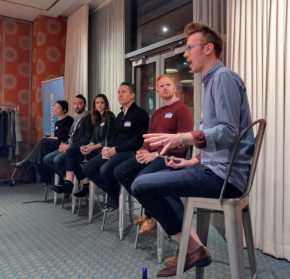
The affiliate space has always evolved with the web, but 2025 feels different. Publishers are navigating one of the most dramatic shifts in how content drives value, both for audiences and advertisers. As organic search traffic becomes harder to win and last-click attribution loses relevance, we have to rewrite the monetization playbook in real time.
We tapped two company leaders—David Kender, Head of Business at Reviewed, and Yoray Halevy, Head of Delivery at StackCommerce—to talk about how they’re adapting and building new value in the affiliate space.
The Industry Is Under Assault (But That’s Not the Whole Story)
“After two decades in the publishing business, it’s become abundantly clear to me that the industry always feels under assault,” says Dave. “But every new chapter has opened doors to novel ways of driving the business forward.”
This chapter is characterized by AI-powered search, featuring zero-click results and AI-driven content that saturates SERPs. Traffic from traditional SEO is no longer guaranteed. But Dave doesn’t see this as a crisis. He sees an opportunity to evolve.
That means exploring new content strategies and monetization angles like:
- Longtail keywords
- Flat-fee brand partnerships
- Editorial + influencer hybrid campaigns
- Affiliate programs that prioritize mid-funnel influence, not just last-click results
In other words: fewer cookie-cutter affiliate links, more thoughtful brand storytelling.
Sounds simple enough, but it’s a question of whether you have the creativity, the gumption, and the team to make the change.
With Reviewed as part of StackCommerce, we’ve been able to open up a whole Swiss Army knife of ways to partner with brands. Maximum flexibility and an eagerness to experiment have been the order of the day, and we’ve got talented support to execute.
Editorial Authority Is the New Performance Channel

Today’s top publishers are positioning content not just as a vehicle for affiliate links, but as a performance channel in its own right. Here’s how our experts break it down:
The Challenge: Attribution models don’t capture editorial influence
When last-click attribution can’t tell the full story, publishers have to prove their value earlier in the customer journey. That’s where mid-funnel metrics and content influence come in.
For buy-in on that pivot, you need better sales assets with case studies and a clearer narrative for brands that highlights what publishers are really good at: building trust, educating audiences, and priming consumers for conversion.
The Shift: Content is being repositioned as a performance lever
Editorial plays a critical role, influencing buyer behavior well before they ever click a link. We’re leaning into partnerships that recognize the value of editorial authority.
That means reframing pricing conversations from “how much traffic can you drive?” to “how much trust are you building?” And trust travels. When content is repurposed through social, email, or video, it extends its shelf life—and impact—far beyond a single post or page.
The key is helping brand partners understand that these upstream touchpoints improve LTV and AOV down the line, even if they don’t deliver immediate conversions.
“Pricing is part art, part science. When affiliate economics fall short of the actual value we’re driving, we often shift to a model rooted in content influence, precise delivery of social ads, and conversion quality,” said Yoray.
The Strategy: Build with intent and optimize for the long term
These content moments might not close the sale directly, but they shape intent in ways that performance marketers can measure with the right proof points (new KPIs, same core value):
- Time on page
- Link hover activity
- Scroll depth and bounce rate
- Social and newsletter engagement
Today’s campaign reporting goes beyond pageviews and click-outs, incorporating deeper engagement metrics and journey mapping to show how publisher content warms the funnel and drives clearer purchase intent.
When brands see that readers are spending 2–3x longer on our content compared to ads or even their own PDPs, that impact becomes clear not only in securing a sale or lead but in teeing up smarter retargeting and spend for the brand itself.
Both Dave and Yoray emphasize the importance of redefining success. “We’re not just focused on visibility and clicks—we’re obsessed with sending the right kind of clicks and audience,” Yoray explains. “Our pricing reflects that, as it incorporates high-quality content writing fees and media boosting budgets. That’s the optimal combination to improve a brand’s messaging, visibility, and engagement.”
The Takeaway? Agility > Volume
Adaptability is more important than scale right now.
As Dave told us, “We all knew that Google was planning to implement AI Overviews, so I think most everyone had their ‘post-Google dependency’ strategies in the hopper. What surprised a lot of people was the speed of the impact.”
For Reviewed, we adapted quickly by leaning into meaningful brand partnerships and consumer product categories that have the highest impact for our business. Within the realm of traditional search, we’ve doubled down where we believe we have a right to win.
The rest of the plan? A renewed focus on growing brand presence across all the platforms where purchasing decisions are being influenced and we can have a relationship with consumers.
The future of publisher monetization will be fragmented, multi-touch, and based on trust. The winners will be those who can clearly communicate their value and prove it, without relying on the old affiliate and SEO rules.

